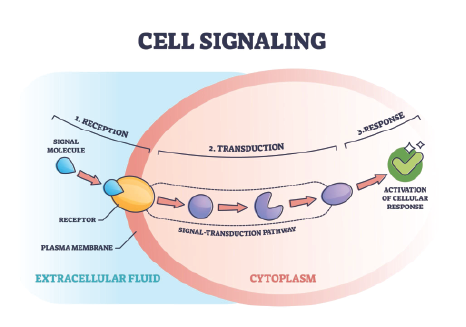Hair Zinc Levels and the Efficacy of Oral Zinc Supplementation in Children with Atopic Dermatitis

Introduction
Atopic dermatitis (AD) is a chronic inflammatory skin condition that affects patients of various age groups, characterized by pruritus, eczematous lesions, and disrupted barrier function.
The Role of CD8+ T Cells in Atopic Dermatitis
A key player in the development of atopic dermatitis is the CD8+ T cell. These immune cells are among the first to arrive at the sites of allergen exposure, where they help to kickstart the inflammatory cascade that leads to characteristic AD skin lesions. Their presence in the skin amplifies local inflammation, making symptoms worse.
Interestingly, the regulation of CD8+ T cell activity is closely connected to zinc levels in the body. Sufficient zinc can influence various molecular pathways—such as promoting PPARα activity and reducing STAT phosphorylation—which in turn curbs the production of certain chemokines (for example, CXCL10) in skin cells. As a result, fewer CD8+ T cells are recruited to the skin, and the intensity of the inflammatory response is diminished. This mechanism highlights why zinc status might be relevant in managing the burden of inflammation in children with AD. Zinc, an essential trace element, plays a critical role in skin health, immune function, and inflammatory regulation, making its deficiency a potential factor in the pathophysiology of AD. However, the role of zinc supplementation in managing AD remains controversial, warranting further investigation.
This study aimed to explore zinc deficiency in children with atopic dermatitis and evaluate the efficacy of oral zinc supplementation in alleviating the symptoms of the condition.
The Role of PPAR Signaling in Modulating Inflammation
Emerging research has shed light on the PPAR (peroxisome proliferator-activated receptor) signaling pathway and its role in the inflammatory processes underlying atopic dermatitis. Zinc, particularly in its bioavailable forms, has been shown to activate PPARα in skin cells known as keratinocytes. This activation sets off a beneficial cascade: by enhancing PPARα activity, there is a suppression of STAT phosphorylation, an event associated with the production of inflammatory chemokines.
A key chemokine affected by this pathway is CXCL10, which normally serves to recruit CD8+ T cells into the skin. These T cells, in turn, amplify the local inflammatory response and aggravate eczema lesions. When the PPAR signaling pathway is upregulated, CXCL10 secretion is diminished, resulting in fewer CD8+ T cells migrating to the epidermis. The overall effect is a dampening of the inflammatory process, contributing to the improvement of skin lesions in children with atopic dermatitis.
The Role of PPAR Signaling in Modulating Inflammation
Keratinocytes, the primary cells in the outer layer of the skin, play an important role in the development and progression of atopic dermatitis. Zinc gluconate, as a supplementary form of zinc, appears to influence these cells in multiple ways. Research suggests that zinc gluconate can enhance the activity of PPARα, a regulator involved in maintaining healthy skin barrier function, while simultaneously reducing the activation of certain inflammatory pathways such as STAT phosphorylation.
This dual action brings about a decline in the release of CXCL10, a signaling molecule that attracts inflammatory CD8+ T cells to the skin. With fewer of these cells present, the level of local inflammation decreases, which may help improve skin lesions commonly seen in children with atopic dermatitis.
The Role of PPARα in Inflammation and Its Therapeutic Potential
Recent investigations have illuminated zinc’s impact on inflammatory processes by exploring its relationship with peroxisome proliferator-activated receptor alpha (PPARα), a nuclear receptor abundantly present throughout the skin, especially in the basal layer of the epidermis. When keratinocyte cells were exposed to zinc gluconate, a notable increase in PPARα protein levels was observed, indicating zinc’s ability to upregulate this receptor. Interestingly, when a PPARα antagonist was introduced, these effects were reversed, reinforcing the direct connection between zinc and PPARα activity.
But the story doesn’t end there. Enhanced PPARα activity triggered by zinc was also found to suppress STAT phosphorylation, a key player in inflammatory signaling pathways. Blocking PPARα reversed this suppression, suggesting that PPARα acts as an upstream regulator capable of dampening inflammation by interrupting signals that lead to the release of inflammatory molecules.
Further, zinc’s influence through PPARα was shown to reduce the levels of pro-inflammatory chemokines such as CXCL10, a finding reversed when PPARα activation was blocked. In the context of inflammatory skin conditions like atopic dermatitis, these actions translate into less skin inflammation, decreased proliferation of keratinocytes, and improved skin barrier stability—all crucial for symptom relief.
Studies have also highlighted that PPARα activation can suppress inflammatory gene expression (like cytokines), promote keratinocyte differentiation and apoptosis, and help maintain healthy epidermal function. Taken together, this growing body of evidence positions PPARα not just as a regulator of inflammation but as a promising therapeutic target for conditions such as atopic dermatitis.
Participant Selection
The study involved 101 participants, including 58 children diagnosed with atopic dermatitis and 43 healthy controls, aged between 2 and 14 years.
To ensure comparability between groups, demographic characteristics such as age and sex were carefully matched. The mean age did not differ significantly between the AD group and controls, and the distribution of males and females was similar in both groups. This helped minimize confounding factors and allowed for a clearer assessment of zinc levels in relation to atopic dermatitis.
By establishing these baseline similarities, the study could more accurately evaluate the relationship between zinc status and AD in this pediatric population.
Exclusion Criteria
To ensure the accuracy of the findings, participants were carefully screened based on several exclusion criteria. Children were not eligible if they had used topical treatments like calcineurin inhibitors, corticosteroids, or antibiotics within the past two weeks. Additionally, anyone who had received microelement supplements or systemic anti-inflammatory therapies in the month prior to enrollment was excluded. This approach helped minimize confounding factors related to recent medication or supplement use, providing a clear assessment of zinc's role in atopic dermatitis.
Baseline Zinc Measurement
Hair zinc levels were measured in all participants to assess zinc deficiency. The mean levels of zinc were compared between the AD group and the control group. In addition to hair zinc analysis, serum concentrations of key trace elements—including zinc, copper, magnesium, iron, and calcium—were evaluated in both the atopic dermatitis patients and healthy controls using standard laboratory techniques. This comprehensive approach provided a clearer picture of the participants’ micronutrient status and allowed for a more accurate assessment of any underlying deficiencies related to atopic dermatitis.
Zinc Supplementation Protocol
AD patients with reduced hair zinc levels were divided into two groups:
- Group A: Patients receiving oral zinc supplementation for eight weeks.
- Group B: Patients not receiving supplementation.
- Assessment Tools
The efficacy of zinc supplementation was evaluated using the following metrics:
- Eczema Assessment Severity Index (EASI): A standardized tool to measure eczema severity.
- Transepidermal Water Loss (TEWL): An objective measure of skin barrier function.
- Visual Analogue Scales: Subjective assessments of pruritus and sleep disturbances.
Results
- Zinc Levels
At baseline, the mean hair zinc level was significantly lower in AD patients compared to controls (113.1 μg/g vs. 130.9 μg/g, p = 0.012), confirming zinc deficiency in the AD group. Notably, complementary analyses of serum microelements also revealed that patients with AD had markedly diminished zinc levels relative to healthy controls. In addition, genomic profiling of AD skin identified distinct gene expression patterns, including a pronounced increase in CXCL10 expression within the epidermis. Elevated CXCL10 levels in AD lesions were found to correlate with reduced serum zinc, further highlighting the potential mechanistic link between zinc status and inflammatory processes in atopic dermatitis.
Impact of Zinc Supplementation
Significant improvements were observed in patients receiving oral zinc supplementation (Group A) after eight weeks:
- Hair zinc levels increased significantly (p < 0.001).
- EASI scores showed greater improvement in Group A compared to Group B (p = 0.044).
- TEWL measurements improved significantly (p = 0.015).
- Visual analogue scales for pruritus and sleep disturbances demonstrated marked improvement (p < 0.001).
Discussion
The findings suggest a strong correlation between zinc deficiency and the severity of symptoms in atopic dermatitis patients.
Mechanism: CXCL10 and Inflammatory Modulation in Atopic Dermatitis
But how exactly does zinc supplementation help ease inflammation in atopic dermatitis? The answer lies in the molecular signals that drive immune cell movement in the skin.
Zinc, in particular, has been shown to influence certain cellular pathways within keratinocytes (the primary cells found in the epidermis). By enhancing PPARα activity and reducing STAT phosphorylation, zinc leads to a noticeable decrease in the release of a chemokine called CXCL10.
Why does this matter? CXCL10 acts like a chemical “beacon,” attracting CD8+ T cells to sites of inflammation. Fewer CXCL10 signals mean fewer CD8+ T cells are summoned to the skin, which, in turn, dials down the local inflammatory response. The result is less redness, swelling, and discomfort—hallmarks of active eczema.
This anti-inflammatory mechanism offers a compelling explanation for the clinical improvements observed with zinc supplementation, further supporting its potential role in managing atopic dermatitis, particularly among patients identified as zinc-deficient. Zinc supplementation effectively alleviated eczema severity, improved skin barrier function, and reduced pruritus and sleep disturbances in patients with low zinc levels. These results highlight the potential of targeted zinc supplementation as a therapeutic approach in zinc-deficient AD patients.
Modulating the JAK/STAT Pathway in Inflammatory Skin Diseases
One emerging area of interest in atopic dermatitis research is the modulation of the JAK/STAT signaling pathway. This pathway plays a central role in inflammatory processes within the skin. By regulating key transcription factors—such as PPARα—and inhibiting specific STAT phosphorylation events, the inflammatory cascade can be significantly dampened.
For example, downregulating this pathway results in reduced production of pro-inflammatory chemokines like CXCL10. With less CXCL10 present, there is a decrease in the recruitment of CD8+ T cells to the skin, which in turn helps to lower inflammation within affected lesions. Ultimately, this targeted approach to modulating immune signaling offers promising avenues for reducing chronic skin inflammation and improving clinical outcomes in patients suffering from atopic dermatitis and related conditions.
Mechanistic Insights: Zinc’s Influence on PPARα and STAT Signaling in Keratinocytes
Delving into the biological mechanisms, elevated serum zinc appears to have a regulatory effect on key molecular pathways in keratinocytes. When zinc levels rise, the activation of peroxisome proliferator-activated receptor alpha (PPARα) is enhanced. This upregulation promotes anti-inflammatory signaling and supports skin barrier repair—a boon for patients with atopic dermatitis.
At the same time, higher zinc concentrations lead to a decrease in the phosphorylation of signal transducer and activator of transcription (STAT) proteins. This downregulation has a cascade effect: it curbs the production of chemokine CXCL10 by keratinocytes, which in turn limits the recruitment of inflammatory CD8+ T cells into the skin. Collectively, these molecular shifts help dampen the inflammatory processes that drive eczematous lesions.
By modulating both PPARα and STAT pathways, adequate zinc levels can thus intervene at multiple points in the inflammatory cycle of atopic dermatitis, offering a mechanistic explanation for the clinical improvements observed with supplementation.
Mechanisms: Zinc Gluconate’s Impact on PPARα and STAT Pathways
Recent evidence sheds light on the molecular mechanisms by which zinc gluconate exerts its therapeutic effects in atopic dermatitis. Supplementation with zinc gluconate appears to enhance the activity of peroxisome proliferator-activated receptor alpha (PPARα) in skin cells, particularly keratinocytes. PPARα is a key regulator of skin barrier integrity and inflammation, so its upregulation promotes healthier skin function.
At the same time, zinc gluconate reduces the phosphorylation—or activation—of STAT proteins, especially those STAT pathways involved in inflammatory signaling. This dual effect leads to a decrease in the production of pro-inflammatory chemokines like CXCL10. As a result, fewer CD8+ T cells are drawn to the skin, diminishing inflammatory infiltration and helping to calm active lesions.
These findings suggest that, on a cellular level, zinc supplementation supports skin health by both bolstering anti-inflammatory pathways (via PPARα) and dampening pro-inflammatory signals (through reduced STAT activation), which collectively help to restore balance in atopic skin.
Zinc Gluconate and the PPARα/STAT Signaling Pathways: Unpacking the Mechanism
Emerging evidence sheds light on the cellular mechanisms by which zinc supplementation may alleviate the inflammatory response in atopic dermatitis, particularly through its interaction with key regulatory pathways in skin cells.
How Zinc Modulates Inflammation
In laboratory studies using HaCaT keratinocyte cells—a standard model for studying human skin—zinc gluconate treatment produced a marked boost in the expression of PPARα, a receptor known for its anti-inflammatory properties and role in skin barrier maintenance. When PPARα activity was blocked using a specific antagonist (GW6471), these positive effects of zinc were lost, suggesting zinc’s anti-inflammatory benefits hinge on PPARα activation.
The downstream impact was equally notable: zinc gluconate reduced both the production and release of CXCL10, a pro-inflammatory chemokine linked to eczema flare-ups. At the same time, zinc dampened the activation (phosphorylation) of STAT proteins, which play a major part in regulating the inflammatory cascade. Blocking PPARα reversed this dampening effect, indicating that zinc’s ability to suppress these inflammatory signals is directly tied to the PPARα/STAT axis.
- Key findings:
- Zinc gluconate increased PPARα levels and activity in keratinocytes.
- Treatment led to lower levels of inflammatory mediators like CXCL10.
- Zinc suppressed STAT protein activation, helping to reduce inflammation.
- All benefits were counteracted when PPARα was inhibited.
Why This Matters for Atopic Dermatitis
Taken together, these findings highlight a promising pathway: zinc gluconate appears to exert anti-inflammatory effects in skin cells by activating PPARα, which in turn leads to reduced STAT activity and lower release of inflammatory molecules. This mechanism may help explain the clinical improvements observed in atopic dermatitis patients following zinc supplementation, especially those with documented zinc deficiency.
Furthermore, published research suggests that PPARα activation supports not only inflammation control but also the restoration of skin barrier integrity—a core concern in managing atopic dermatitis. By modulating these pathways, zinc supplementation could offer a dual benefit: taming inflammation and supporting healthier skin barrier function.
The Role of PPARα Activation in Inflammatory Signaling and Keratinocyte Function
Emerging evidence sheds light on the molecular underpinnings behind zinc’s benefits in atopic dermatitis, specifically its relationship with peroxisome proliferator-activated receptor alpha (PPARα). PPARα is a nuclear receptor abundantly present in the skin’s layers, especially in the basal layer of the epidermis. Its function goes well beyond maintaining skin structure—PPARα acts as an important moderator of inflammation and skin barrier integrity.
Modulating Inflammation Through PPARα
Activation of PPARα by zinc appears to play a central role in controlling signaling pathways that drive inflammation. One notable outcome is PPARα’s suppression of STAT proteins, key players in propagating inflammatory responses. When PPARα is activated, studies have shown a reduction in the phosphorylation of STAT1, effectively dialing down the cascade that leads to the production and release of cytokines and other pro-inflammatory mediators. This means that activating PPARα doesn't just hit the brakes on inflammation; it helps quiet the noisy pathways that exacerbate skin irritation in AD.
Effects on Keratinocytes and Skin Barrier
Keratinocytes—the workhorse cells of the epidermis—also benefit from PPARα activation. Zinc-driven upregulation of PPARα in these cells has been linked to enhanced differentiation and regulated cell turnover, supporting healthy skin renewal. Additionally, PPARα seems to assist in maintaining epidermal homeostasis, promoting barrier repair, and reducing abnormal thickening—a common feature in chronic eczema. Laboratory studies using models like HaCaT cells reveal that when PPARα is activated, there is notable improvement in skin barrier proteins and a decrease in inflammatory chemokines such as CXCL10.
A Promising Therapeutic Target
Taken together, these findings highlight PPARα’s role not only as a gatekeeper of skin inflammation but also as a facilitator of proper keratinocyte function and epidermal repair. By harnessing the anti-inflammatory and barrier-supporting properties of PPARα activation—potentially through oral or topical zinc supplementation—future therapies could better target the root causes of atopic dermatitis, opening new avenues for symptom relief and long-term skin health.
Conclusion
Oral zinc supplementation may offer significant benefits for patients with atopic dermatitis who exhibit zinc deficiency. While this study provides compelling evidence for its efficacy, further research is needed to establish standardized guidelines for zinc supplementation in managing AD.
Future studies should explore:
- Long-term effects of zinc supplementation on AD management.
- Optimal dosages and formulations for zinc therapy.
- The interplay of zinc with other trace elements and nutrients in skin health.
Jeong Eun KIM, et.al. Department of Dermatology, Hanyang University Hospital, Hanyang University College of Medicine, Seoul, Korea. Acta Derm Venereol 2014. Laboratory analysis provided by Trace Elements laboratory, Dallas, Texas 75001

Dr. Michael Rudulph Maxon, AKA Johnny Delirious, Laboratory Naturopathic Doctor, gives expert advice rooted in holistic healing principles, drawing on 40 years of professional experience in the health industry. He helps his patients recover and heal using food and Ancient Greek therapies, utilizing organic remedies that are all backed by modern laboratory science. He is unquestionably the only TRUE Addiction & Hepatitis A, B, and C Recovery Pioneer. Free of mood-altering substances (cocaine) since 1991, with no viral load or antibodies of hepatitis since 1994, and no cirrhosis since 1995. Nobody in his life—including doctors, friends, and family—thought he would live past 1992; they all said he was going to die. But, Johnny chose life, not death, and learned how to heal his body, mind, and spirit by developing new protocols with natural therapies, including the thoughtful application of homeopathic remedies where appropriate. For over 20 years, he has helped many others recover, including professionals like doctors, dentists, and lawyers, who prefer alternative medicine over chemical drugs or surgery to address the same conditions that everyone said were hopeless.
Contact Johnny for a Hair Tissue Mineral Analysis (HTMA) to get the right diet, supplements, and expert advice, benefiting from his 30 years of experience in these specialized protocols.
United States - 972-825-7912
http://www.johnnydelirious.com


